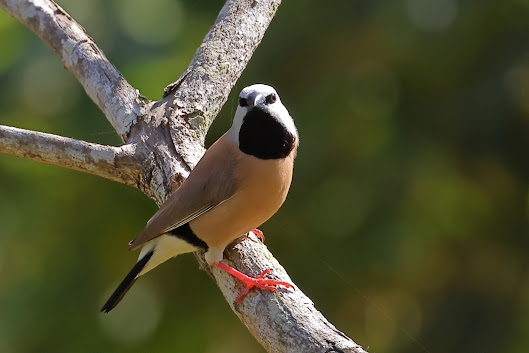 Who's up for some time with slime? No pretence at dinkum knowledge on my part. Pictures mine, the serious stuff's from a book.
Who's up for some time with slime? No pretence at dinkum knowledge on my part. Pictures mine, the serious stuff's from a book.What looks like a kitchen sponge turned feral is a mature fruit body called a sporangium (spore producing phase) of Fuligo septica (slime mould: Myxomycota division of kingdom Protoctista).
The spores become an amoeba-like creeping slime mass called a plasmodium feeding on bacteria, fungi and organic debris. (Remember The Blob? - Showing my age!). When the time of slime ends the cycle begins again. (I don't think the insects are in danger.)
 The large (about 100mm x 50mm) red bracket fungus Pycnoporus coccineus (kingdom Eumycota; division Basidiomycota), is a common sight on fallen logs. Tyto has many such, casualties in the war against invasive exotic trees. (Insect definitely not in danger.)
The large (about 100mm x 50mm) red bracket fungus Pycnoporus coccineus (kingdom Eumycota; division Basidiomycota), is a common sight on fallen logs. Tyto has many such, casualties in the war against invasive exotic trees. (Insect definitely not in danger.) Pictures here reverse usual order of things. But it's time the slime moulds - few in number and until recently lumped in with the fungi - got a break. Tough enough cycling through life looking like lumps of dog vomit and worse without always being put last in all the books.




Hello, I like this blog.
ReplyDeleteSorry not write more, but my English is not good.
A hug from Portugal
Great photo. I like the 'feral kitchen sponge' reference :-)
ReplyDeleteHi,
ReplyDeleteJust curious. How large is the slime mould?
Chai
Thanks anastacio (first hug I've had) and mosura. Chai, this one about 110mm wide: size and shape varies.
ReplyDelete